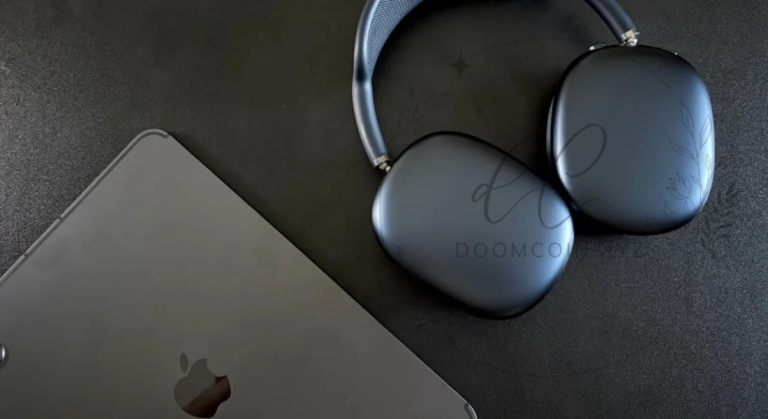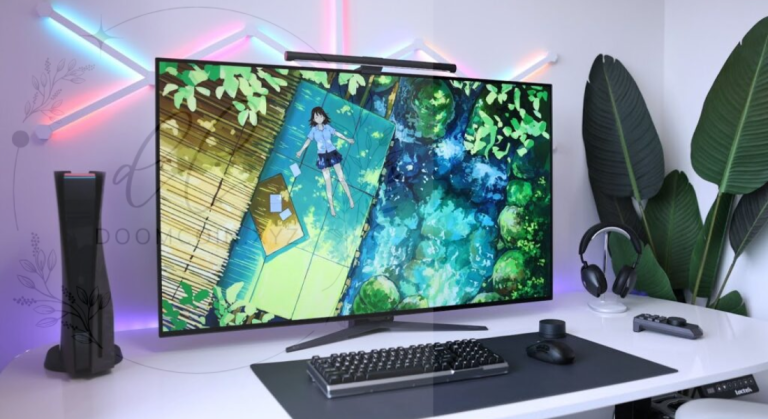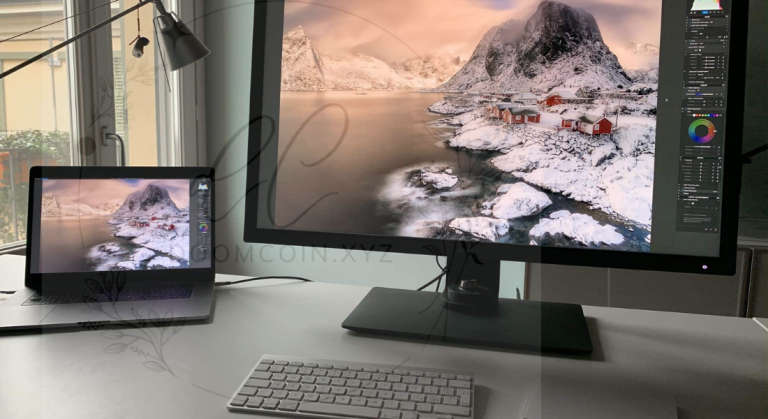
Introduction to Apple Retina Display
Apple has set a high bar for display technology with its Retina Display, a term synonymous with high resolution and superior quality visuals. Designed to enhance user experience, Retina Displays minimize pixel visibility, creating a seamless and ultra-sharp appearance that defines Apple’s device screens, from iPhones to MacBooks. But what exactly makes the Apple Retina Display unique, and how does it compare to other displays?
In this guide, we’ll explore the details of Retina Display technology, its impact on everyday usage, and why it remains a top choice for users worldwide. By understanding the fundamentals of Retina Display, you’ll gain insight into what makes Apple products stand out visually.
What is Apple Retina Display?
The Apple Retina Display is a high-resolution screen that packs in so many pixels per inch that the human eye cannot discern individual pixels at a typical viewing distance. This innovation leads to an incredibly smooth, detailed display where text and images appear sharper and more realistic than on conventional screens.
Initially introduced in the iPhone 4, the Retina Display was a breakthrough for mobile technology. Apple has since expanded this technology across its product range, including iPads, MacBooks, and Apple Watches. The Apple Retina Display remains a benchmark in the display industry, setting a standard that competitors aim to match.

The Evolution of Retina Display in Apple Devices
Apple’s Retina Display technology has evolved over time, with improvements in pixel density, color accuracy, and brightness. Here’s a look at how Apple Retina Displays have progressed:
- iPhone Retina Display: The iPhone 4 was the first device to feature the Retina Display, boasting a resolution of 326 pixels per inch (PPI). This marked a new era for smartphone screens, delivering exceptional sharpness.
- MacBook Retina Display: Apple introduced the Retina Display to MacBook Pro in 2012, with a PPI of around 220. The larger screen space required even higher clarity and sharpness, and Apple delivered a display that professional users greatly appreciated.
- iPad Retina Display: With a larger screen, the iPad needed a display that could provide a similar clarity to smaller devices. The iPad Retina Display features around 264 PPI, ensuring crisp visuals for media, reading, and design tasks.
- Apple Watch Retina Display: Even on a small wearable device, Apple achieved a Retina Display level resolution, showing that this technology could be scaled to any size without compromising quality.
How Does Apple Retina Display Work?
The secret behind Apple Retina Display’s effectiveness is its high pixel density. By packing in more pixels than traditional displays, Retina Display eliminates the appearance of visible pixels at standard viewing distances.
This high pixel density requires more advanced manufacturing techniques and has a direct impact on battery life and performance. Apple counters this with power-efficient hardware and software optimizations, ensuring that Retina Displays deliver high-quality visuals without excessive power consumption.
Benefits of Apple Retina Display
The Apple Retina Display brings several advantages that enhance the user experience, including:
- Improved Clarity: Text appears sharper, making reading easier and less straining on the eyes.
- Enhanced Color Accuracy: With a wide color gamut, Retina Displays produce vibrant and true-to-life colors, ideal for photo and video editing.
- Better Contrast: Deep blacks and bright whites are more pronounced on Retina screens, making content look more dynamic.
- Reduced Eye Strain: The smoothness and clarity of the display reduce the strain associated with prolonged screen time.
Retina Display vs. Liquid Retina and Retina HD
Apple offers several variants of the Retina Display, each with its unique qualities. Here’s a comparison:
- Retina HD: Found in older iPhones, Retina HD was a step up in sharpness and clarity but lacks some of the advancements seen in later displays.
- Liquid Retina: First introduced on the iPhone XR, Liquid Retina offers near-OLED quality with better color accuracy and edge-to-edge displays, though it’s LCD-based.
- Retina XDR: Used in Pro models like the iPad Pro, Retina XDR takes visual clarity to the next level with extreme dynamic range, achieving unparalleled brightness and contrast ratios.
Devices That Use Apple Retina Display
Apple has integrated Retina Display across its range, making it the standard display technology for iPhones, iPads, and MacBooks. Here’s a breakdown of devices with Apple Retina Display:
- iPhones: From iPhone 4 to the latest models, most iPhones feature Retina or Super Retina (OLED) Displays.
- MacBook Air and Pro: All recent MacBook models include Retina Displays, with the MacBook Pro offering higher brightness for professional use.
- iPad and iPad Pro: The iPad lineup benefits from Retina Displays, with the iPad Pro sporting the advanced Liquid Retina XDR for an extra boost in quality.
- Apple Watch: Even on small screens, the Apple Watch’s Retina Display ensures crisp visuals.
Future of Apple Retina Display
Apple continues to push the boundaries of display technology, and the Apple Retina Display is expected to evolve with each new product release. Future improvements may focus on even higher pixel densities, lower power consumption, and enhanced dynamic range, possibly leveraging new technologies like microLED or OLED for more vibrant visuals.
Is Apple Retina Display Worth It?
For those considering an Apple product, the Apple Retina Display is often a compelling reason to choose the brand. Its clarity, color reproduction, and viewing comfort make it ideal for various tasks, from reading and browsing to professional design work. Whether you’re editing photos or simply watching movies, Retina Display offers an unmatched visual experience that sets Apple devices apart.
Conclusion
Apple’s Retina Display represents a commitment to quality and innovation in display technology, offering clarity and color reproduction that enhances every interaction. As a cornerstone feature in Apple’s lineup, the Apple Retina Display is more than just a high-resolution screen—it’s a promise of quality that users have come to trust. With continued advancements, Retina Display is set to maintain its position at the forefront of the industry, ensuring Apple devices remain visually stunning and highly effective.
Apple’s vision for Retina Display doesn’t end here; as technology advances, so too will the screens of iPhones, iPads, and Macs. For now, the Apple Retina Display remains a definitive feature, reinforcing Apple’s place as a leader in digital displays.



